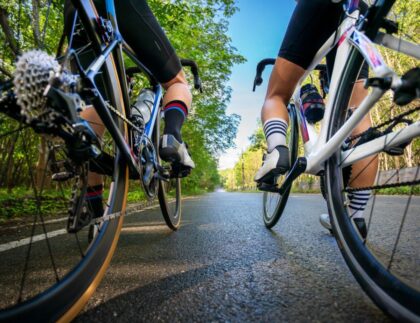
Drink Water, Herbal Tea, or Black Coffee
Often, what we perceive to be hunger is just thirst. Staying hydrated while fasting can help alleviate our desire to eat (to a certain degree). Also, drinking unsweetened and creamer-free tea or coffee won’t “break” your fast. It can be helpful to sip on these during the food-free part of the day because caffeine also acts as an appetite suppressant.
Track Your Time & Calories
Many apps help you track your fasting time and calorie intact. In addition, there are ones built into smartwatches that can monitor health as well.
Since your meals are closer together in the day, you might feel like you’re overeating. However, this could lead to a tricky roller-coaster of fasting and then overeating if you aren’t aware of how much you are truly eating.
Eat Meals With Higher Fat & Protein
Dietary fat and protein both help keep you full for longer. They also alleviate the sugar crash symptoms that can happen with high-carb diets. When adjusting to a new eating pattern, trying to stabilize hunger will help you stick to it.
Experiment With Different Eating Windows
One thing to consider before starting intermittent fasting is that you might have to try out different patterns before finding one that fits you. A smaller eating window doesn’t always mean more benefits for you.
If your body expects to eat most of the day, it may have difficulty adapting to a 6-hour window. So, instead, start bigger and slowly make it smaller over time as your body adjusts.
Consider Your Health & Body
Finally, everyone has their own individual health needs. Specific populations might not do as well with the more strict windows, like those with thyroid issues or women, as this could mess with healthy hormone functioning. Intermittent fasting can be a tool for some people, but it might not be the best for everyone.
As with all health changes, check with a dietician or nutritionist to make sure these changes are for the better.











